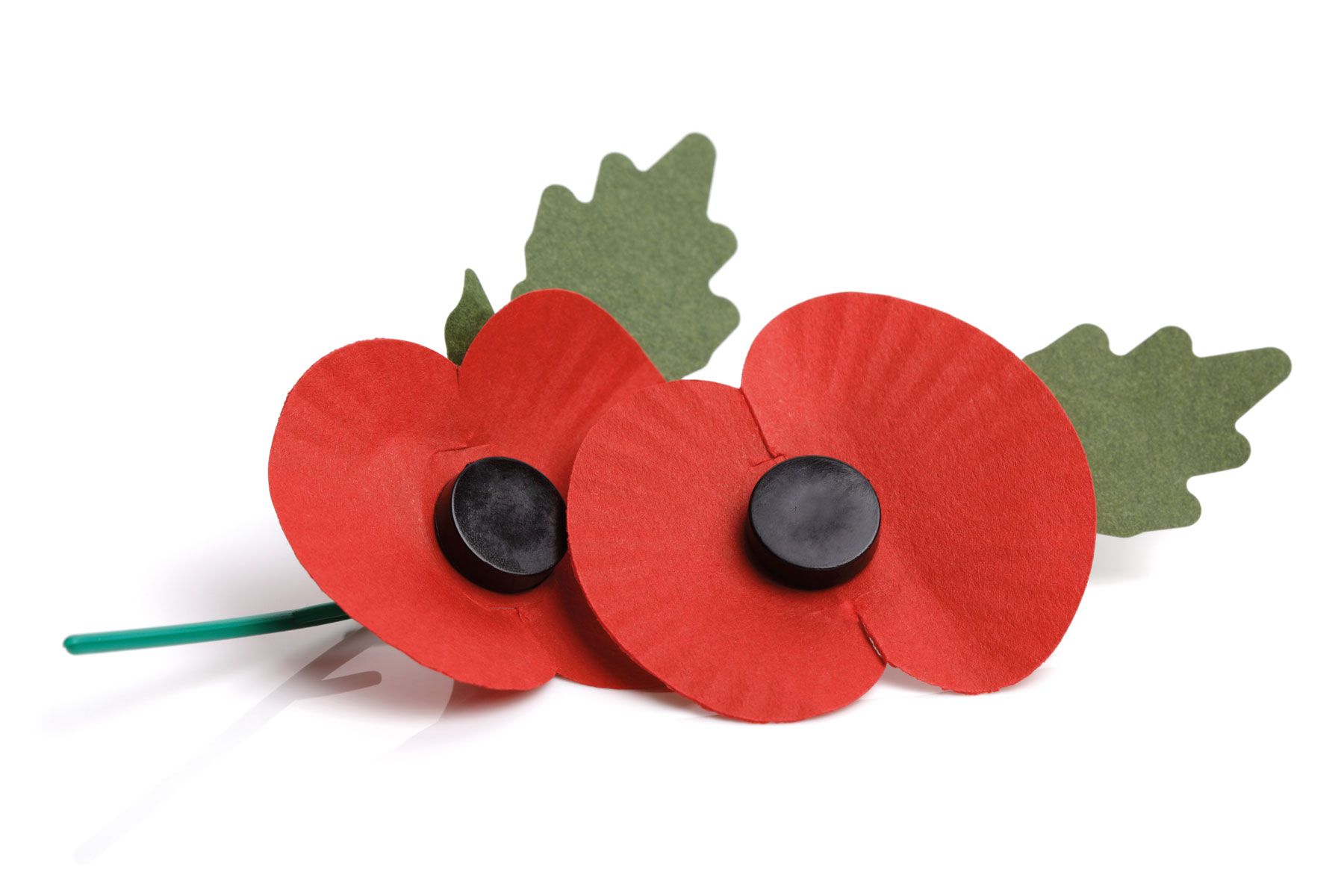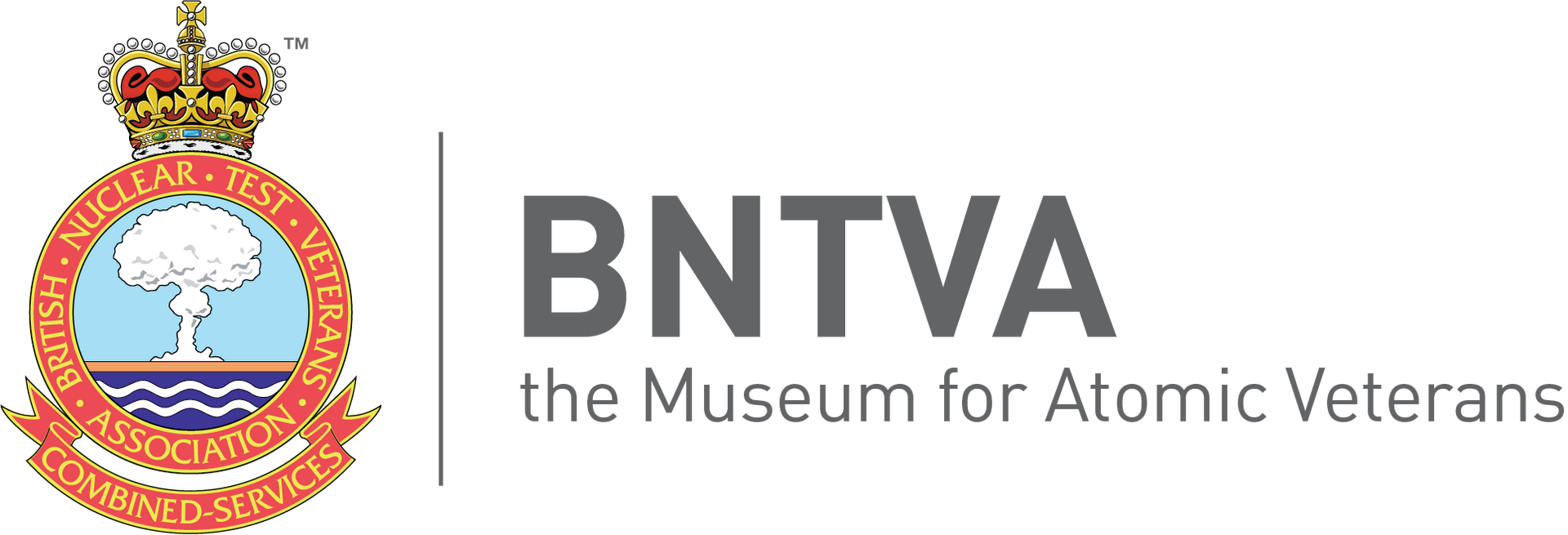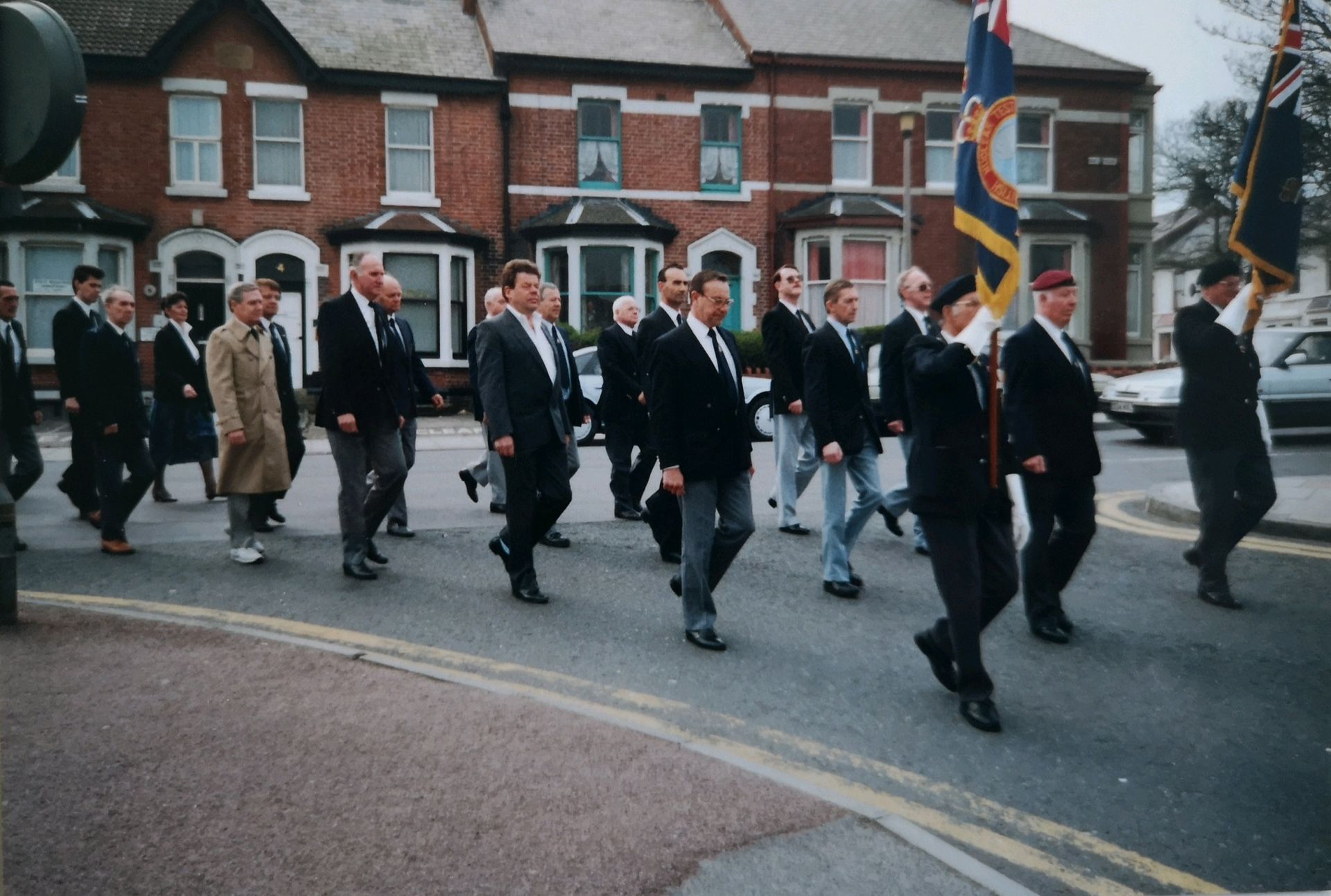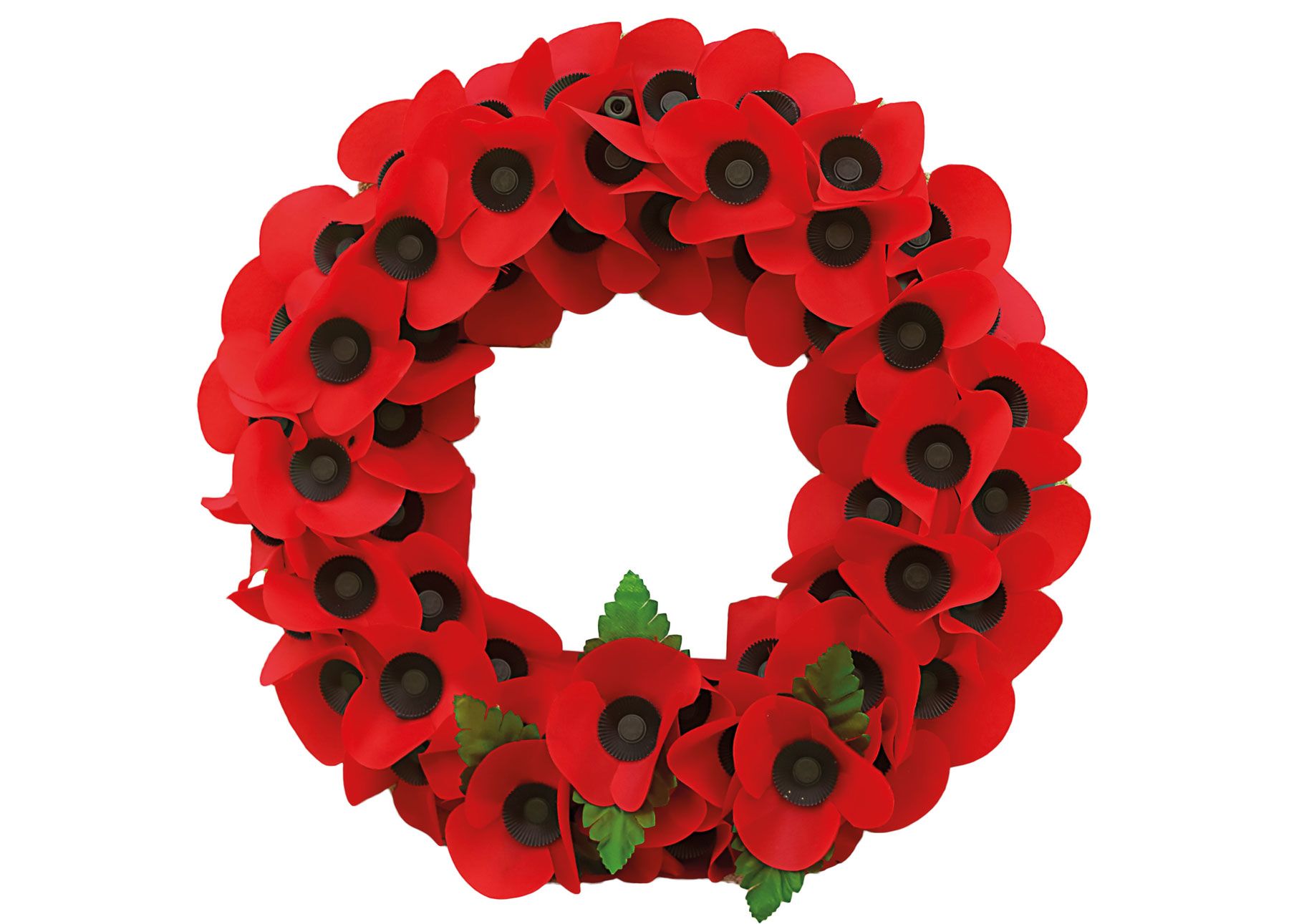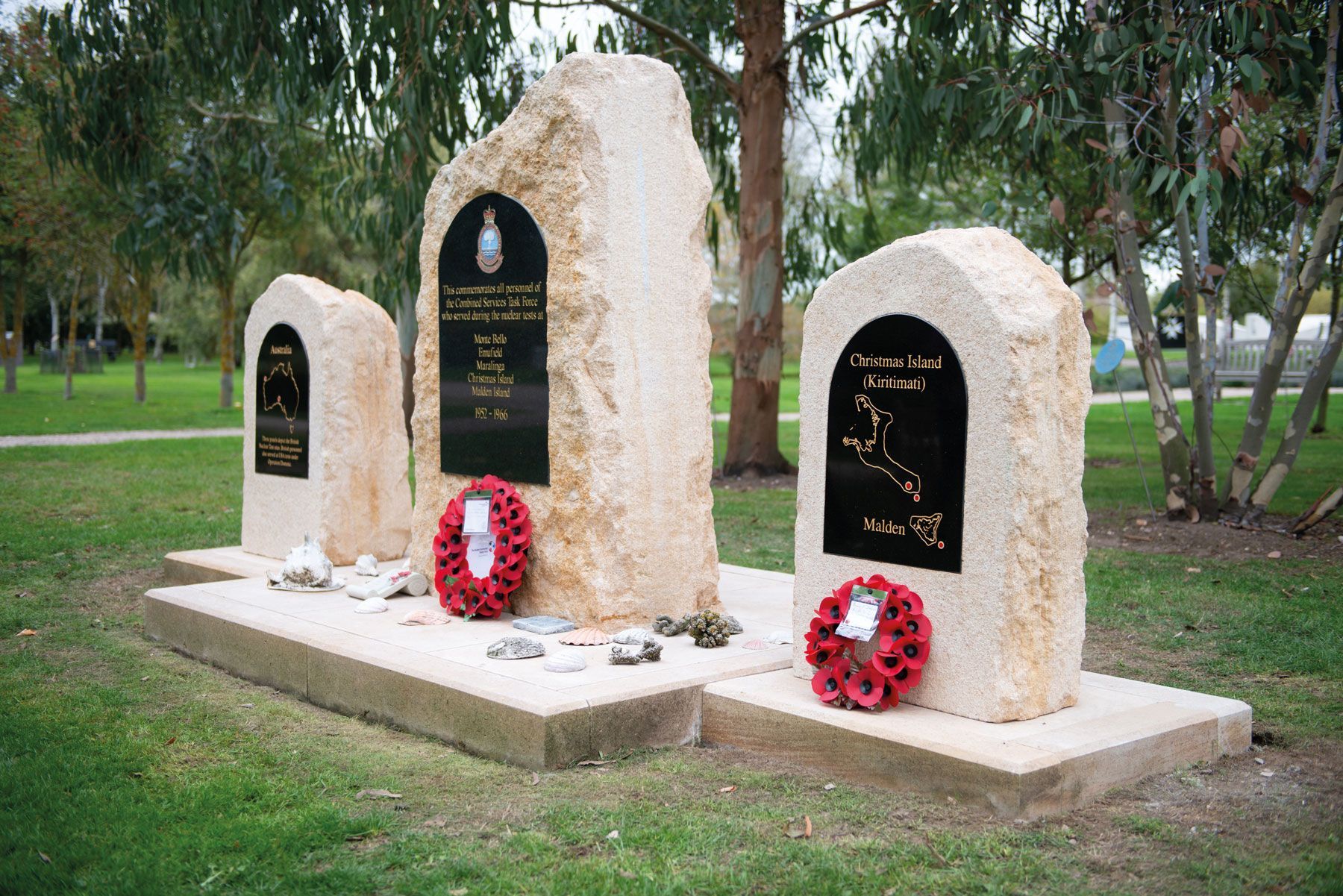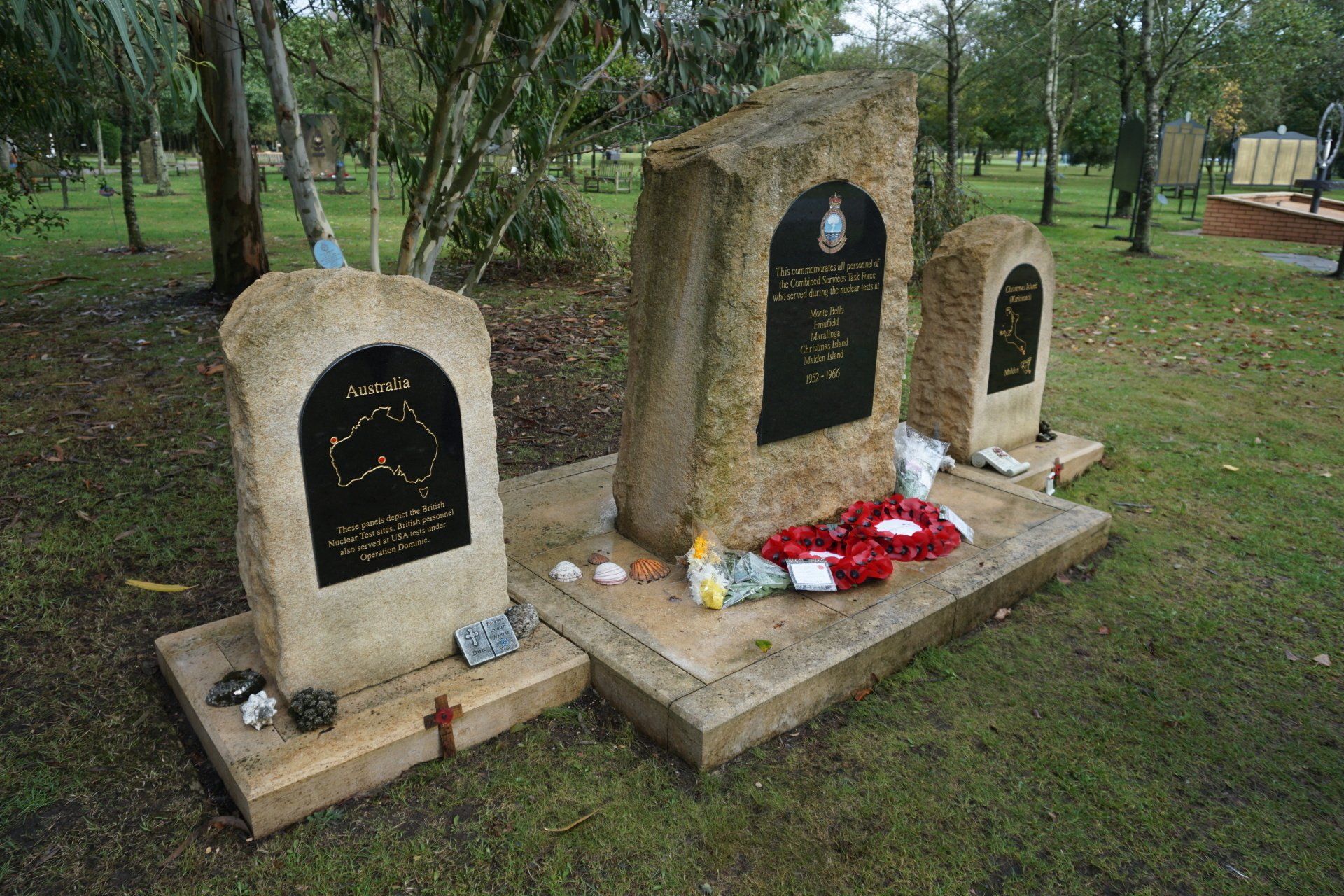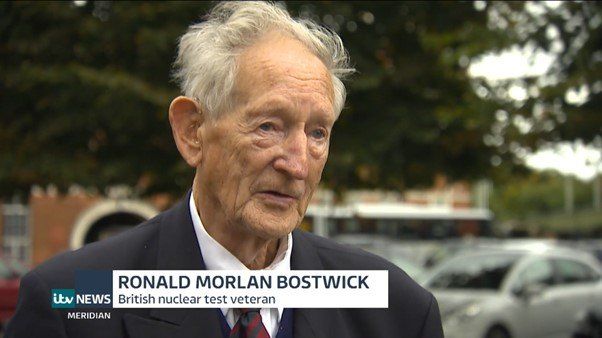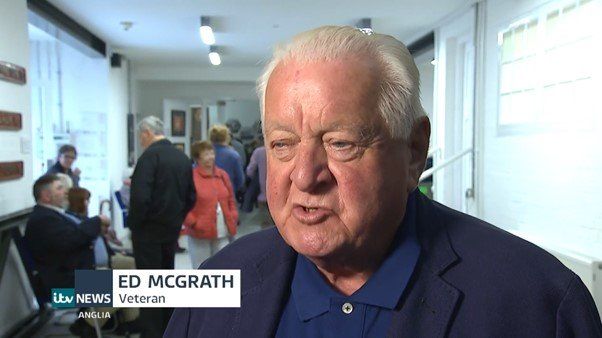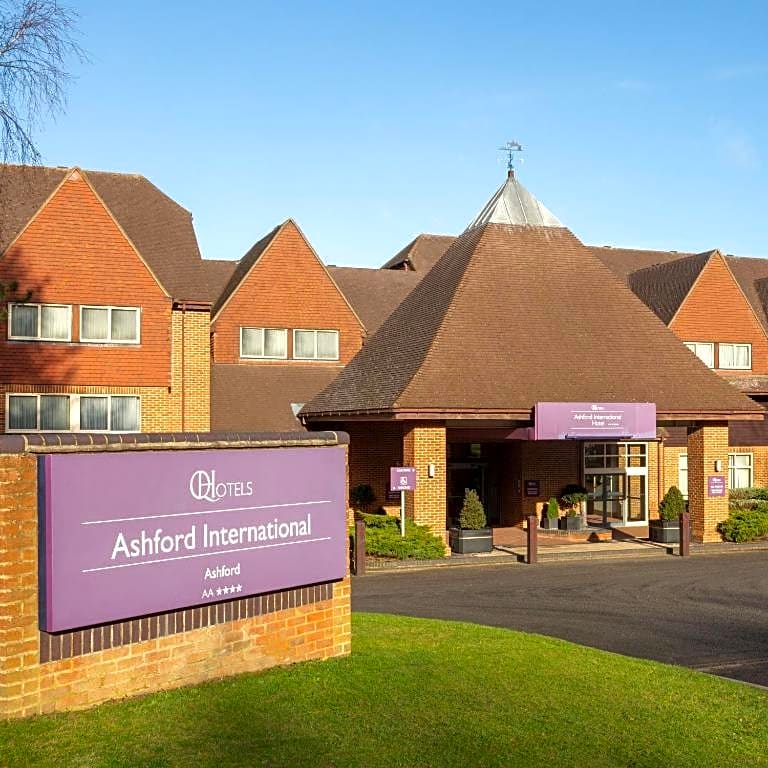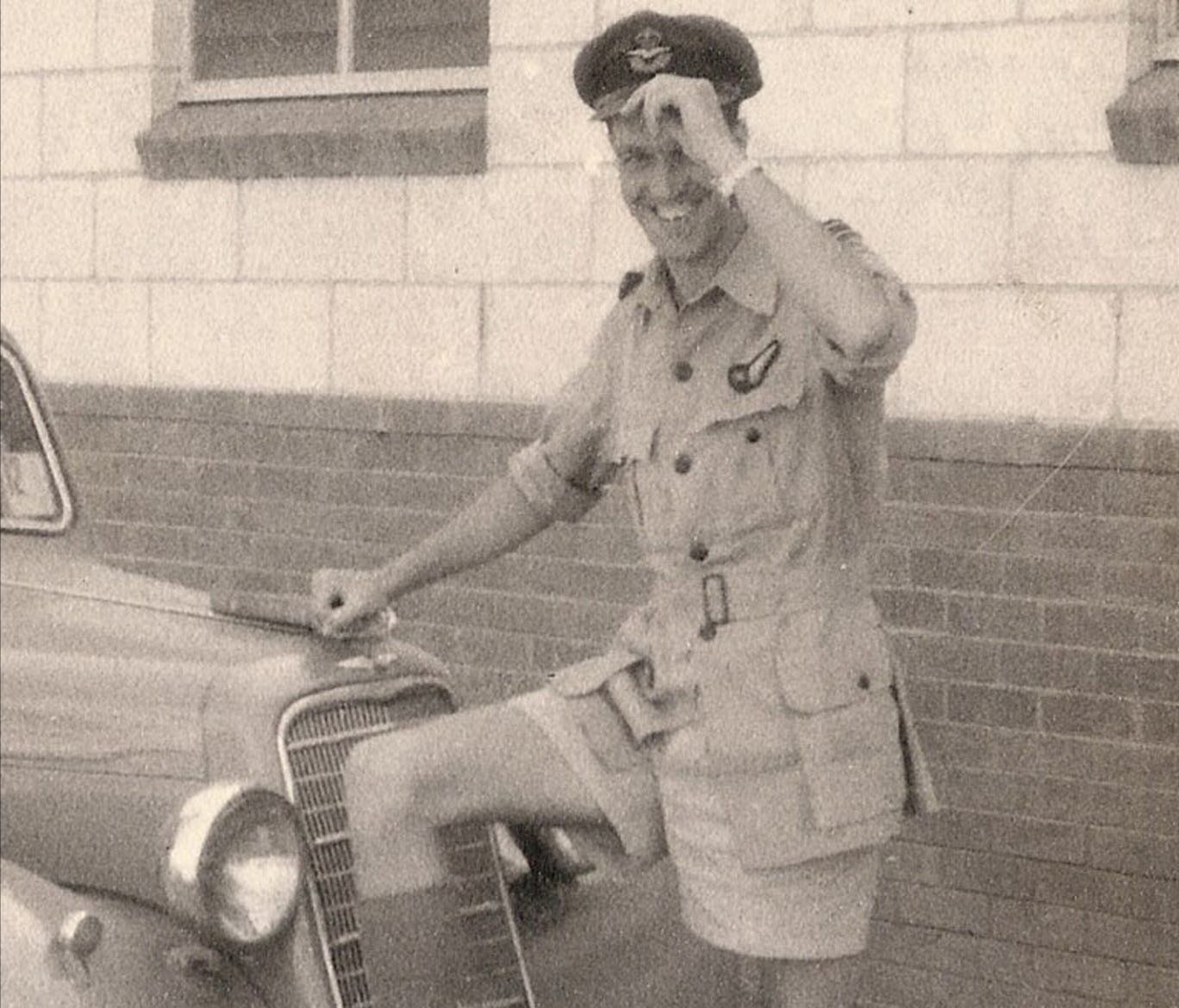Buckets of sunshine in a broken paradise – the Operation Dominic nuclear test series, 1962, Christmas Island.
To commemorate the 59th anniversary of Operation Dominic between 25th April-11 July 1962 at Christmas Island, the BNTVA will publish a series of articles over the next three months, concerning the personal experiences of service personnel from these tests.
John Lax, a 20-year-old newly qualified Air Wireless Mechanic, requested a posting to RAF Christmas Island in 1961. John’s father had been stationed at Christmas Island as a Lieutenant in the REME after Operation Grapple in 1959. John wanted to experience the sun, beautiful blue sea and scuba diving, as well as see where his father was stationed. John considered a posting to RAF Christmas Island to be a relaxed experience – how wrong could he be?
Although the living conditions had improved since Operation Grapple, with servicemen staying in huts rather than tents, when the Americans arrived two extra people joined each hut. John witnessed a series of 25 nuclear bomb tests in 77 days, out of a total of 36 nuclear test explosions within Operation Dominic in the Pacific Ocean (including the testing of a Polaris missile, “Frigate Bird”). The tests yielded a total of 38.1Mt and were the biggest series of nuclear tests ever carried out by the United States of America.
Joint Task Force 8, led by Major General Alfred Starbird, with the involvement of combined services, civilians from the Department of Defense, the Atomic Energy Commission, the US Public Health Service and private contractors at Operation Dominic, known to the British as Operation Brigadoon. Americans arrived on Christmas Island to commence nuclear testing between April and November 1962.
This Operation followed talks between Prime Minister Macmillan and President Kennedy. The Americans had agreed with the British to perform nuclear tests at Christmas Island, as the British Armed Forces were already based at the Island, and this cemented the US-UK alliance. The tests were quickly scheduled in response to the Soviet commencement of nuclear testing following the 1958-1961 moratorium, during a period of Cold War tension after the Cuban Bay of Pigs invasion.
John witnessed air drop tests between April 25th and July 11th, which were carried out by B-52 bombers. Twenty of these tests were performed to test new weapons’ designs, six to test weapons’ effects, and several shots to test the reliability of already existing weapons.
On 25 April 1962, the first test “Adobe” was carried out using an XW-50X1-Y2 warhead in a Mk-39 Mod-1 Type 3 drop case - a free fall air burst. The mushroom cloud rose to over 60,000 ft.
Test:
Adobe
Time:
15:45 25 April 1962 (GMT)
Location:
Christmas Island
Test Height and Type:
B-52 Airdrop, 2,900 Feet
Yield:
190kt
Device Diameter (inches):
15.4
Device Length (inches):
44
Device Weight (lb.):
409
Speed was of the essence for the Americans, and the next test, “Aztec”, on 27 April 1962, used an increased yield of 410kt. In his article, published in “Transmitting”, Summer 2020, John recalls,
“On a Wednesday in September 1961 I left a comfortable billet at RAF Hullavington to start my journey to a remote island in the Pacific Ocean called Christmas Island. This journey included stops in New York, San Francisco and Honolulu then on to my destination.
This was quite an adventure for a 20-year-old who had trained as an RAF Air Wireless Mechanic just one year ago. The final leg of the journey was in an RAF Hastings C2 aircraft, a four engine, propeller driven transport aircraft with no sound insulation which made the six-hour flight less than comfortable.
Christmas Island is a coral atoll, the highest point on the Island being just 5 feet above sea level and was to be my home for the next twelve months.
Once settled in, I started work in the Radio Bay at the airfield. The Radio Section consisted of just four people, a Corporal and a SAC Air Wireless, and a Corporal and a SAC Air Radar. The building was a thatched hut in a coconut plantation near the airfield. When we suffered any strong winds, the nuts would fall off the trees and damage the roof so we would not only repair/maintain Radio equipment but also became reasonable efficient thatchers.
I worked on the Hastings aircraft, which carried a high frequency (HF) communication set called STR 18 and VHF communication sets. In addition, there was a Radio Compass and a Radio Altimeter (never used) which was useless over the sea.
When an aircraft was going to Hawaii, we would carry out a “Route Before Flight Check”, which consisted of a functional check of all equipment. We would call the Tower on HF and VHF, the functional check for the Radio Compass would be to tune it to a radio station on Oahu called KORL Radio. This signal was in-line with the centre line of the runway at Hickam Field. It was easy for us to tune in to KORL because at 0600 the Ionosphere was sufficiently low for us to get a strong signal and then the Navigator could follow the signal and listen to music all the way to Hawaii. Landing at Honolulu was rather strange because the International Airport shared the runway with USAF Base Hickam so as you landed the left side was military aircraft of all sizes and the right side was the civilian airport.
Additional equipment on the Hastings aircraft consisted of a small intercom amplifier - a simple device which very rarely gave any trouble, so I was rather surprised when the Flight Engineer informed me that the intercom was intermittent. What also surprised me was that this gentleman had quite a severe stutter, and I wondered how he managed to become aircrew with such an impediment. Despite investigation I was unable to reproduce the alleged fault, then I was informed that the offending aircraft was to be air-tested for the investigation of an engine fault, so I invited myself on the flight. During the flight, the Radio Operator asked me what I was doing so I explained, he laughed and told me to ignore it as the Engineer who reported it had built-in intermittency!
As well as the large transport aircraft we also had Captain Flit, an Auster aircraft converted for spraying DDT over the Island to keep bugs at bay, hence the name. The pilot of this toy was the Station Adjutant who only had two ambitions: to spray DDT over the Army personnel as they walked from the Mess Servery to the Dining Hall and to remove the antenna that was erected by a Radio Ham. This aircraft had a VHF Radio on board but with just 3 crystals in it; the obligatory International Distress frequency, 121.5 Kilo cycles, and the two Tower frequencies and was never a problem as far as air Wireless was concerned.
Communication was, generally not a problem, the usual meteorological interferences sometimes caused a headache, but we coped. Then in 1962 the Americans arrived, en masse; their first two aircraft arrivals produced more personnel than we had in the three British Services combined.
This was the start of Operation Dominic, which we later discovered was to be a series of Nuclear Bomb Tests. The Americans were so well organised they forgot to send any Groundcrew for the first week, so we had to form two shifts to handle up to 10 aircraft each day, including weekends. In addition, we had to keep our own aircraft flying.
The build-up to the tests progressed, and we were issued with our Safety Equipment - a pair of very black goggles and a Radiation Dosage Film Badge. Our instructions were: at 10 minutes to detonation, we should assemble on the football pitch wearing long trousers and a long sleeve shirt and sit with our backs to the blast. When tests were scheduled for 0500, we would be roused from our slumbers by a very loud tannoy broadcast: “This is Mahatma, the time is T minus X minutes and counting”. The response this message got cannot be repeated but suffice it to say it was less than polite.
As it was always dark when the tests took place the fireball would change the sky to blue so in typical military humour this event became known as a “bucket of sunshine”.
A side effect of these events was the slight interruption in the signals traffic. Traffic was nominal as all the detonations were airbursts but at low level and about 30 miles away. The full programme of 25 tests, we are led to believe, caused little damage to the area but I believe fishing was not recommended in the area around the drop zone.
One test did, however, cause some disruption; this was a device known as a “Rainbow Bomb”. This was detonated on the edge of space and, apparently, ruptured the Van Allen Belt and disturbed the ionosphere thus making long range communication impossible and grounded all flights from Hawaii to Australia for a few days.
When the tests were completed and the Americans all went home, we settled back into our more relaxed ways. We played football and cricket, drank NAAFI beer and generally got on with our jobs.
A downside to all of this because our protective equipment was less than adequate, many British Servicemen have suffered debilitating ailments and are still suffering. The British Nuclear Test Veterans Association believes there are still 2500 Veterans who were involved in various tests, not just Christmas Island and are striving for their recognition by the UK government.
John L W Lax
Vice Chair BNTVA
